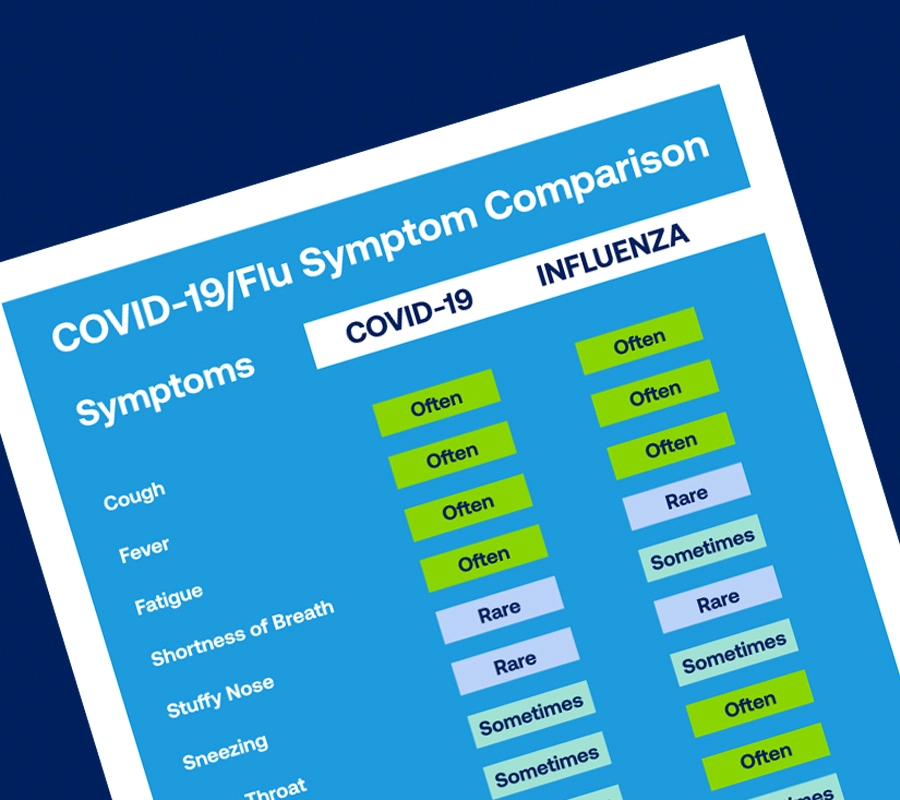You have undoubtedly heard it before: The novel (new) coronavirus spreads like the flu. It infects people like the flu. Sometimes, it even kills people like the flu. But COVID-19 is not the flu. It is an entirely different lung disease. While common sense tactics remain imperative, we must employ additional strategies to combat COVID-19.
How are they similar?
COVID-19 spreads through sneeze, cough and contact with infected surfaces. Some individuals are at greater risk for severe illness, notably older individuals and those living with chronic conditions like lung disease. In this way, COVID-19 is similar to the flu. However, as the following chart shows, there are stark differences between the two:
Flu season happens every year. The brunt of it occurs during the fall and winter typically infecting 5-20% of the population and causing 12,000 to 79,000 deaths in the U.S. each season. To combat this known public health threat, we encourage annual flu shots to guard against the most likely viruses causing harm in any given year. Good public health practices are recommended, such as washing hands and covering sneezes. For individuals at higher risk, antiviral medications may be prescribed upon early diagnosis to reduce the severity and duration of the illness.
By comparison, COVID-19 has not been seen in humans before. It is spreading at a more rapid rate than the flu, partly because we do not have protective antibodies to the virus due to lack of previous exposure. Plus, COVID-19 can be spread by infected people who exhibit no symptoms. It may end up infecting 20-60% of the population and could lead to 17,000 to 13,742,000 deaths based on current estimates. Since it is a new disease, no vaccine is available yet to prevent illness and, therefore, everybody is potentially susceptible. Nor is there an antiviral treatment presently available to reduce severity and duration, though scientists are busy at work on this new research and development.
How can I protect myself from COVID-19 now?
Good public health practices are the best tools in our toolkit to date. These preventive measures include social distancing, washing your hands, keeping your hands away from your face, and avoiding anybody who is sick or may have been exposed to COVID-19.
Knowledge is power!
We will continue to update our website in keeping with the news as it evolves. During this difficult time of much uncertainty, meanwhile, it is important to stay connected (virtually) with family and friends to better cope with feelings of isolation and loneliness. We are all in this together.
Disclaimer: The information in this article was medically reviewed and accurate at the time of posting. Because knowledge and understanding of COVID-19 is constantly evolving, data or insights may have changed. The most recent posts are listed on the EACH Breath blog landing page. You may also visit our COVID-19 section for updated disease information and contact our Lung HelpLine at 1-800-LUNGUSA for COVID-19 questions.
Blog last updated: August 29, 2023



